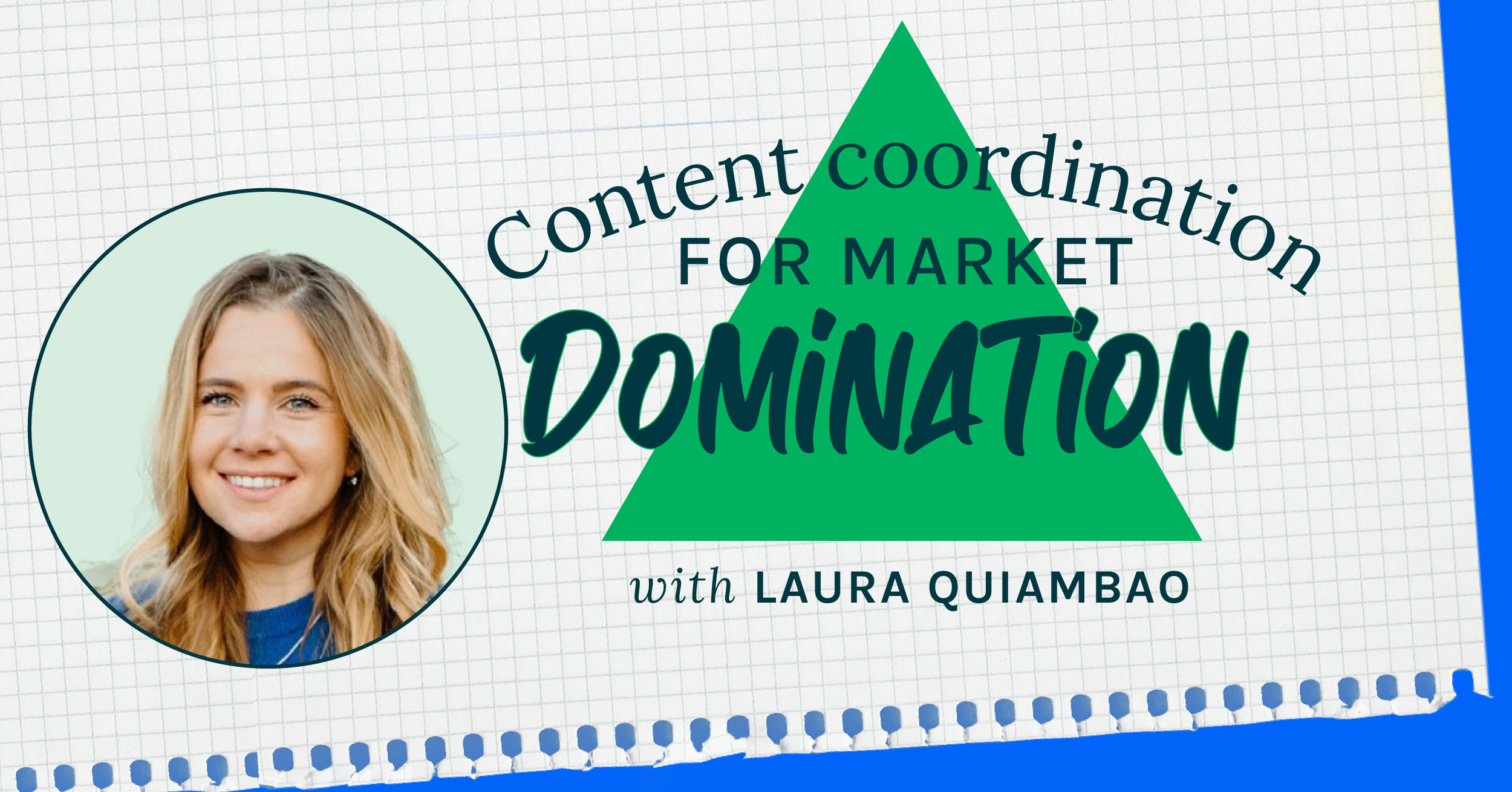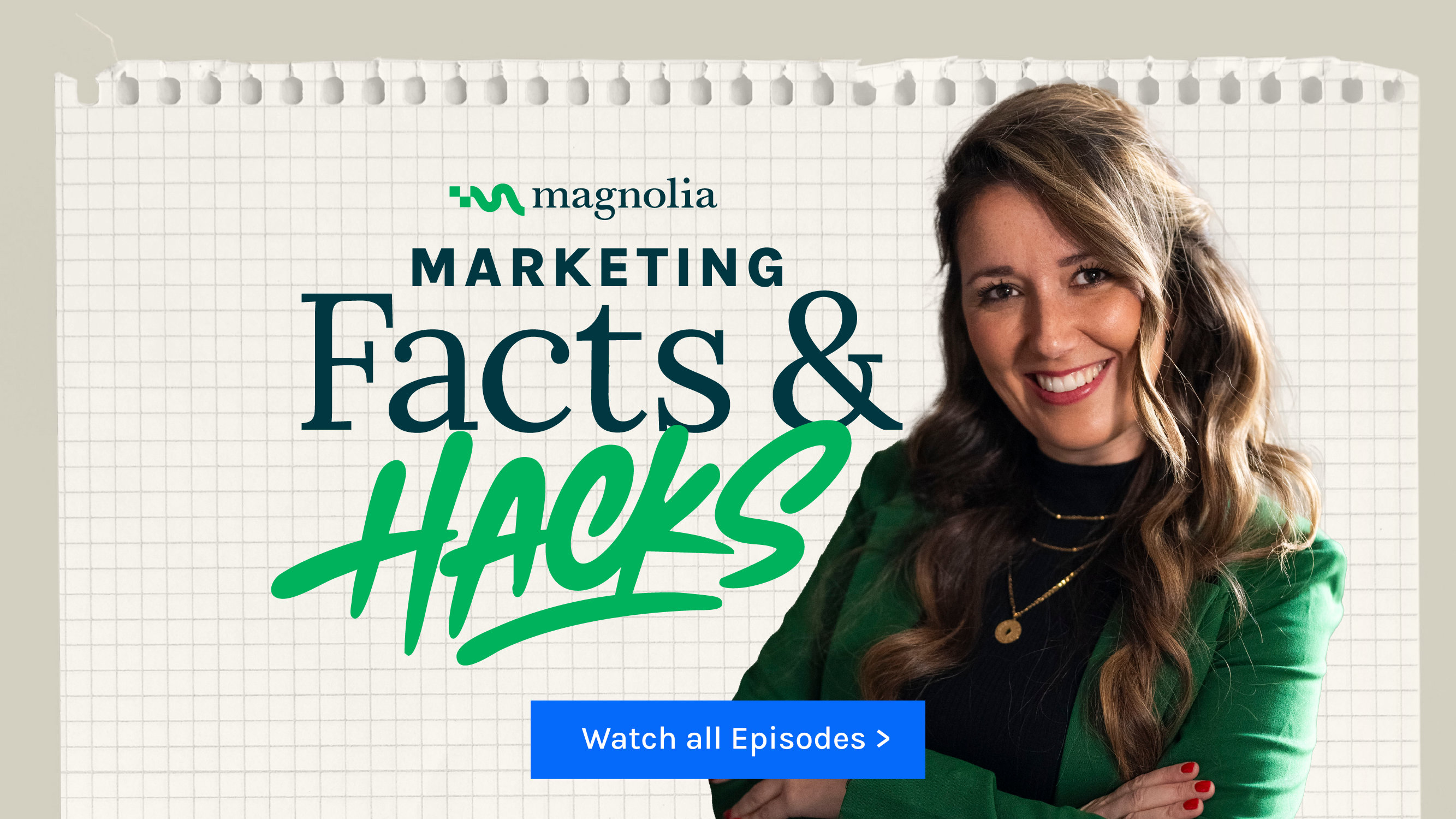- Sep 15, 2025
- --
Content Coordination for Market Domination
Marketing Facts & Hacks Episode 2
Experience Magnolia in action
Experience Magnolia's key features firsthand in an interactive product tour.
Take a tour nowMarketing expectations are high these days, but marketers can’t expect budget increases any time soon. Budgets shrank by 15% from 2023 to 2024 and this year is no different – forcing marketers to do more with less.
So if you’re wondering how you can dominate your categories with limited resources, this episode of Facts and Hacks is for you. In this second episode, we’re taking a deep dive into the world of content coordination. Because great content operations are the key to delivering more with less. But the secret: it’s got to ladder up to a real company objective.
We’ve all been there. You’ve got one writer, 10 requesters, and 50 opinions. It’s a logistical nightmare, and yet, you’re expected to churn out high-quality content at a faster pace. The solution is a laser-focused content strategy that not only streamlines the process but also drives results—six times more leads, to be exact.
The Facts: Getting specific about content
New York Times Licensing reports that content marketing generates leads that are six times more likely to convert than traditional channels. And the best part is content marketing costs 62% less.
But don’t get too comfortable just yet.
According to the Content Marketing Institute’s latest findings, only 29% of marketers with a content strategy say it’s “very” or “extremely” effective. Why the disconnect? Well, it comes down to a few key missteps: a lack of clear goals (42%), ineffective use of data (35%), and an overemphasis on quantity over quality (20%).
Many teams struggle with creating effective content, especially when resources are tight. It’s tempting to rush, but if your content doesn’t align with your audience's needs, it won’t drive results. The key is investing time upfront to analyze your market, audience, competitors, and product to inform your strategy. This effort pays off by making your content more targeted and faster to produce, ultimately leading to more conversions and real ROI. Without a clear plan, you’re like a ship without a rudder—heading in multiple directions with no clear goal. Trust me, I’ve been there. But as this episode’s guest points out, it doesn’t have to be that way.
I invited content strategy expert Laura Quambao to share her wisdom on keeping your content efforts aligned and maximizing ROI. Laura has worked with Silicon Valley luminaries like Clari, Wrike, and Handshake, helping them dominate their categories with a cohesive, strategic approach to content marketing.
So, what’s Laura’s hack for keeping content on track? Let me tell you, it’s brilliant—and simple.
The Hack: A framework for efficient (and effective!) content creation
Laura suggests creating a content pyramid: a system that ensures every piece of content—from blogs to webinars—works toward the same overarching goal while keeping your team aligned and on-brand. This will also help you manage all the different requests and opinions we mentioned above, giving you a clear path. Everything outside that path can be declined for good reason: it doesn’t serve the objective!
At the top of the pyramid, you’ll have your themes. Think of these as the cornerstone of your content strategy, ideally set for two quarters at a time. These themes should be broad enough to fuel multiple pieces of content but specific enough to create a sense of ownership within your team. Below the themes, you’ll have your boilerplate messaging, which serves as your “North Star” positioning. This is your go-to language to share with all teams, ensuring consistency across all content channels.
Then, you get to the fun part: the anchor pieces. These are your lead-generating assets—think guides, webinars, and analyst reports. These big-ticket items will serve as the core of your content strategy, drawing people in and providing value. And finally, at the base of the pyramid, you’ll have your supporting content—blogs, social media posts, and PR. These are the pieces that drive traffic to your anchor content and ultimately convert your leads.
Laura recommends having around three to four themes at any given time, and encourages teams to experiment, test new ideas, and above all, have fun with it. After all, great content should inspire—and that’s where the magic happens.
Watch the full episode here:
Why it Works
It’s not about creating more content—it’s about creating smarter content. By building your content strategy around clear themes and structured messaging, you can maximize your impact without burning out your team or blowing your budget.
Laura’s content pyramid works because it creates a clear, focused path for your content efforts. In practice, the pyramid should start with broad, overarching themes that align with your company’s goals and the specific pain points of your target audience. These themes should not only reflect your product positioning but also resonate with what your audience needs to hear right now. And most importantly, the strategy has to align every department—from product to marketing to sales—around the same core themes and messaging. This way, your content becomes a true driver of growth and conversion.
As Laura said, “Start with clear themes, build around them, and watch your content work harder for you."
Want more episodes of Marketing Facts and Hacks?
Check out the show page to learn from leading tech marketers how to build content marketing campaigns that drive real business outcomes!













